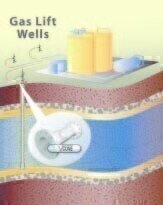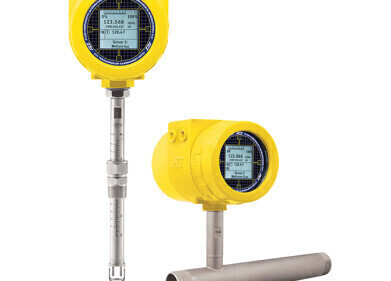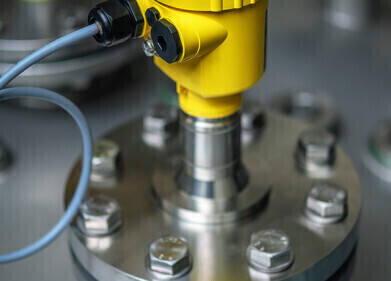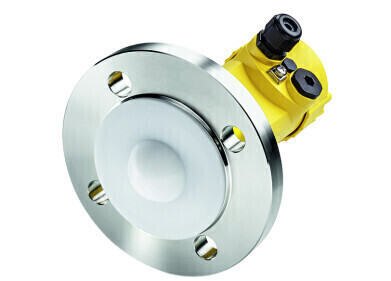Flow Level Pressure
V-Cone Flowmeter Improves Efficiency and Reduces Costs in Gas Lift Applications
Nov 07 2010
Process engineers responsible for crude oil production from wells that employ gas lift systems to increase oil production will find that the rugged, highly accurate V-Cone Flowmeter from McCrometer (USA) features a wide turndown, small footprint and virtually no maintenance, which reduces total installed costs and operating lifecycle costs while improving crude oil production efficiency.
Gas lift systems employed for Enhanced Oil Recovery (EOR) increase crude oil production by injecting gas into the well bore casing to reduce the density of the oil being produced. The injected gas mixes with the oil in the casing and the low reservoir pressure in the formation is then sufficient to allow production without the need for pumps. Some oil wells produce natural gas that is separated from the oil stream once it reaches the surface. The well operator then re-injects a portion of this byproduct gas, in turn maximising production from the well. Carbon dioxide, nitrogen, or engineered chemical solutions can also be employed in gas lift wells.
Through EOR techniques such as gas lift, oil producers can increase recoverable reserves from 10 to 40 percent to 30 to 60 percent. Reliable, accurate flowmeters that are virtually maintenance free, such as McCrometer’s V-Cone flowmeter, are ideal for these EOR applications. McCrometer’s V-Cone flowmeters feature accuracy of ±0.5% of rate and repeatability of ±0.1% ensuring accurate measurement and control of the injected media. Accurate measurement of the injected media maximises crude oil production while greatly reducing costly over-injection that can be found when other flowmeter technologies wear and begin under-reading. A minimal 0.5% under-read can result in wasted over-injection costs in the range of $500 to $5,000 per well per year, depending on the specific application.
With its no-moving parts design, the V-Cone flowmeter is proven to remain accurate in installations for 25 years or more in the toughest of applications, all but eliminating the need to shut down production for calibrations, inspections, or regular replacement of the primary element, saving not only through production up-time, but also in parts and labor.
McCrometer’s differential pressure V-Cone flowmeter provides built-in flow conditioning, which nearly eliminates the up and downstream straight pipe runs required by other flow meter technologies, reducing typical straight pipe run by 70% or more requiring only 0-3 straight pipe diameters upstream and 0-1 downstream for precise operation.
Unlike traditional dP instruments such as orifice plates and venturi tubes, the V-Cone flowmeter’s design is inherently more accurate because the flow conditioning function is built into the unique sensor design. The V-Cone flowmeter’s centrally located cone interacts with the fluid steam, reshaping the velocity profile to provide a stable signal that increases measurement accuracy. The pressure difference exhibited between the static line pressure and the low pressure created downstream of the cone is measured via two pressure sensing taps, one placed slightly upstream of the cone and the other located in the downstream face of the cone itself. The pressure difference is then incorporated into a derivation of the Bernoulli equation to determine the fluid flow rate. Engineers in the oil/gas industry rely on the versatility of McCrometer’s V-Cone flowmeter available in line sizes from 0.5 to greater than 120 inches in materials and flanges compatible with any application. The flowmeter operates over a wide flow range of 10:1 which typically covers the entire flow range required for injection in gas lift applications.
McCrometer’s versatile V-Cone flowmeter is well-suited for the demanding standards set by the oil/gas production and refining industry. The V-Cone flowmeter conforms to the American Petroleum Institute’s API 22.2 Testing Protocol for Differential Pressure Flow Measurement Devices as well as other international certifications such as Measurement Canada and Brazilian INMETRO when allocation and even custody transfer measurements are required.
Digital Edition
PIN 25.2 Apr/May
May 2024
Safety - Carbon monoxide toxic and flammable gas detection Analytical Instrumentation - Density: A fundamental parameter at critical stages within the petroleum sector - Advancements and...
View all digital editions
Events
May 23 2024 Beijing, China
May 23 2024 Beijing, China
May 28 2024 Tel Aviv, Israel
May 29 2024 Beijing, China
May 29 2024 Astana, Kazakhstan


















